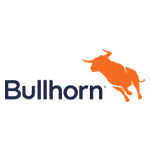Despite being clear on how automation can benefit their efficiency and engagement levels, many recruitment agencies in the UK have yet to fully embrace it.
Automating and accelerating recruitment and placement processes does remain a concern for the industry, with 29% of firms ranking it in their top three challenges for 2018. However, only 16% rank actually implementing automation technology as a top three priority.
In fact, according to Bullhorn’s 2018 UK Recruitment Trends Report, 40% of agencies don’t automate during the prospecting or client engagement stages, and more than 30% of agencies don’t use it during any stage of the recruitment process. In fact, 22% simply stated they are not sure of the value of automation.
So, how can this ambivalence be explained?
An underwhelming rate of adoption
The recruitment industry is still in the early phases of adopting automation technology. Even pragmatic tools, such as real-time email replies to job applicants and online application parsing, are yet to see widespread adoption.
The only clear reason for this, to emerge from our research, is a fear that increased automation threatens recruiters’ employment prospects, with 41 percent believing automation will result in job losses. That being said, 30% felt automation would create more jobs and 29% simply aren’t sure.
All that said, automation is key to efficiency and engagement and will therefore have a big role to play in the industry going forward.
The big opportunities within automation
The recruitment industry is no stranger to large volumes of administration – particularly in the back office and invoicing departments. And while seemingly menial, these tasks are mission-critical.
The good news is that in addition to basic administrative activities, tasks such as prospecting and sourcing candidates, replying to applicants, organising meetings, and entering data into a CRM system can all be handled automatically. This means that recruiters can devote their time and energy to more strategic and profit-orientated work.
Encouraging automation adoption
In order to overcome resistance to incorporating automation into daily practices, recruitment agency leadership teams need to consider their approach carefully – it’s not something that can be done overnight. Here are three important steps to follow during the adoption process.
Educate your team and include them in the tech adoption process
To overcome employee reluctance, and allay any concerns, it’s important to involve staff in the adoption process from the beginning. Leadership teams need to show evidence of how, by adopting automation, their employees can invest more time in business-critical work – whether that be from an engagement or efficiency perspective. Dedicated training sessions and seminars are essential to help users maximise the benefits of automation.
Be clear on how automation will be used
In addition to employees, systems and processes are at the core of any business. It’s crucial that neither an agency’s people, nor its processes and key stakeholders, are overly disrupted by new ways of working.
Before implementing any new product in which automation is inherent, agencies must ensure that not only staff, but also candidates and clients, are comfortable with how it will be used. Be transparent on how automation will and won’t be used for different processes within the recruitment lifecycle.
When it comes to staff, be clear that automation is not a crutch to lean on, but rather an enhancement to their productivity. When it comes to candidates and clients, be prepared to demonstrate that automation does not absolve recruiters of the responsibility to build strong relationships; quite the opposite, it helps ensure that greater focus is placed on engagement, personalisation, and satisfaction.
Track performance and measure success
Getting employees and systems up to speed is only half the journey. Successful adoption of automation requires regular check-ups to track and measure progress. Agencies need to have clear metrics in place to define their goals and establish expectations. Are you introducing automation to create efficiencies, are you using it to increase client engagement, or both? In any case, your KPIs need to reflect these objectives.
While awareness of the benefits of automation is steadily growing, there is an opportunity for early-adopters to take the lead as industry trailblazers and trendsetters – and reap the rewards.
Consider your business model – are you focused on high volume or high touch? After all, 40% of our survey’s respondents attributed automation’s greatest value to increased efficiencies, while only slightly smaller number (38%) attributed it to increased engagement. If you want to be better at either, or indeed both, you must develop a better understanding of how automation can lift the administrative burden from your agency and how you can use it to increase profitability.







